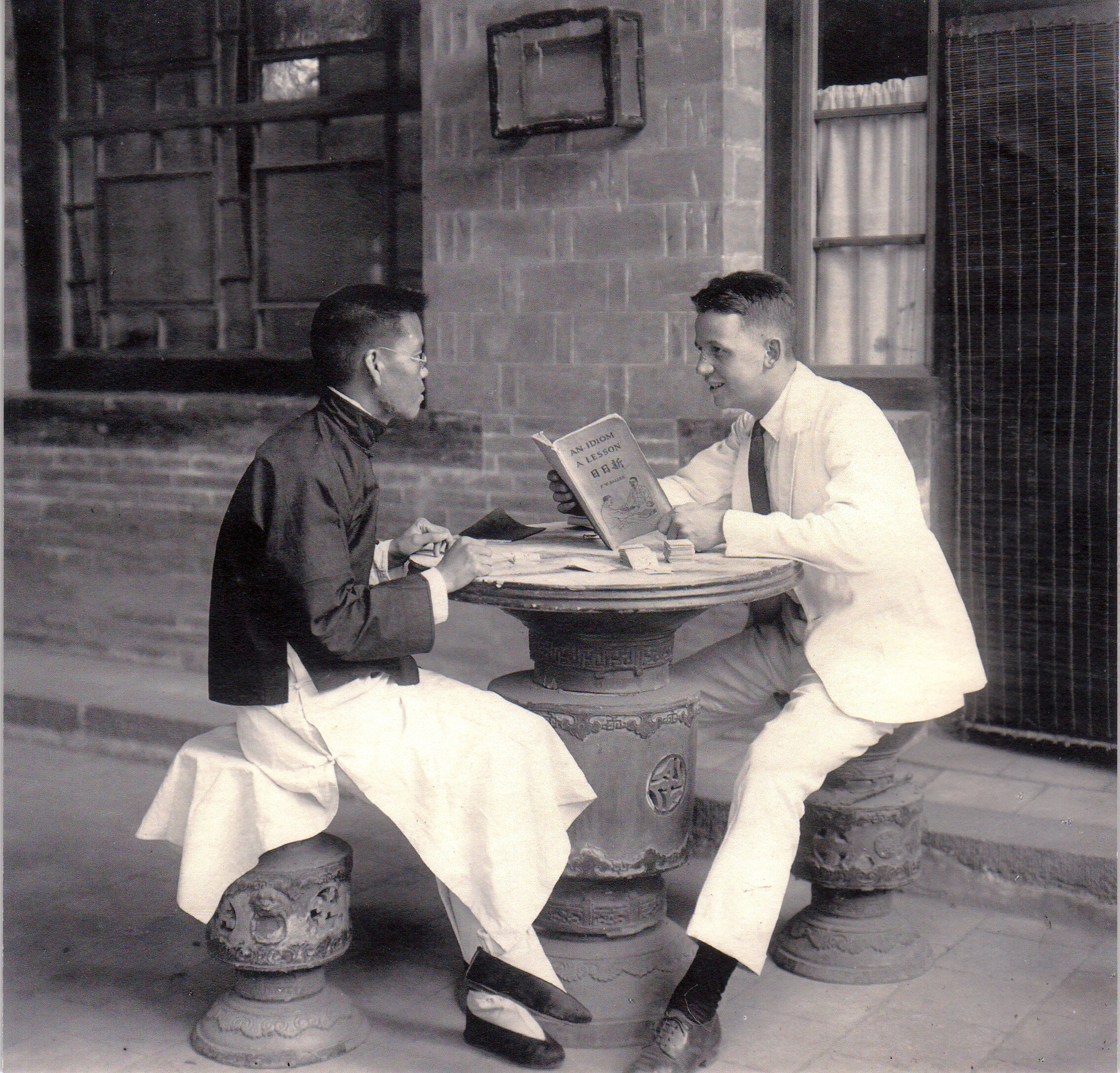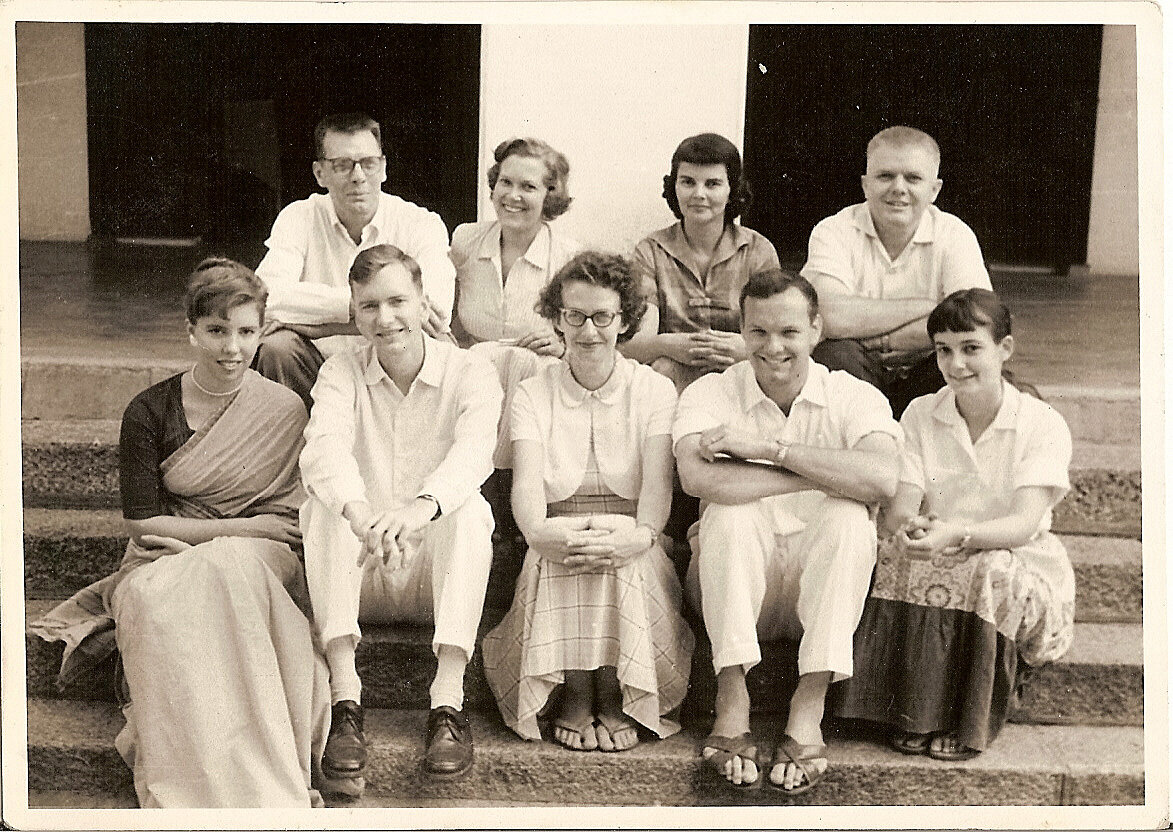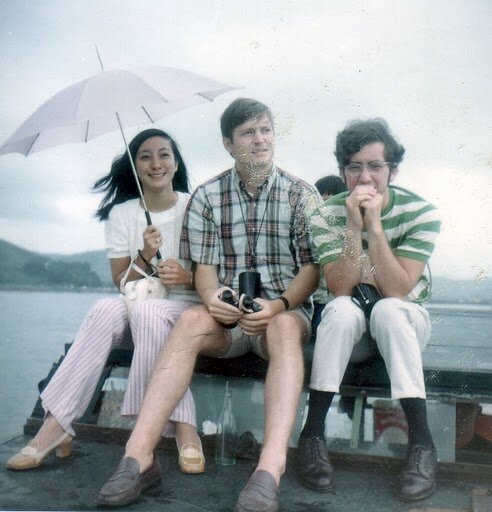
Since 1908
Image: Shansi Rep Raymond Moyer (1921-23) studying Chinese with his teacher in Taigu, China.
A brief history of Oberlin Shansi
Oberlin Shansi’s roots lie in China’s Shanxi Province, where in 1881 Oberlin Graduate School of Theology students formed “The Oberlin Band” and began mission work under the auspices of the American Board of Commissioners for Foreign Missions (ABCFM) of the Congregational Church. In 1900, twenty members of the mission and many Chinese Christians were killed in the upheaval of the Boxer Rebellion, inspiring the construction of a Memorial Arch in Oberlin College’s Tappan Square in 1903 by the ABCFM.
In the fall of 1907 Oberlin College graduate H. H. Kung (’06) returned to his native Taigu in Shanxi Province and consolidated the remnants of earlier mission educational efforts, creating the schools Ming Hsien (for boys) and Beilu (for girls), the “Oberlin-in-China.” In January 1908 the Oberlin Shansi Memorial Association was founded with the purpose of establishing and supporting Kung’s educational efforts in Shanxi. In 1918, Oberlin students and graduates began residing in Taigu and working with the schools, thus starting the Shansi Rep tradition. Through the following decades, Shansi Reps introduced new teaching ideas, agricultural research approaches and technologies, and continued to work with these communities even after they were evacuated westward during China’s Civil War.
The dramatic change in government in China in 1949, and the outbreak of the Korean War in 1951, severed Shansi’s China connection, with no expectation that Oberlin Reps might ever be able to return. Forced to cut a fresh path, Shansi created new partnerships and exchange programs in India, Japan, and Taiwan to carry forward Oberlin and Shansi’s engagement in Asia. At the same time it began to secularize, and by 1972 any mention of Christian education was purged from the organization’s Regulations.
From the 1950s through the 1970s, Shansi consolidated relationships in India and Japan and also experimented with other program partnerships in Korea, the Philippines, Indonesia, Thailand, Sri Lanka, Nepal and Afghanistan. In 1979, an invitation to renew ties in China led to the resumption of Shansi’s work in Taigu with the assignment of four Shansi Fellows.
Today, Shansi engages with universities and non-government organizations in China, India, Japan, and Indonesia, and remains inspired by more than a century of partnership to seek new opportunities to bring together Asian and American individuals and communities in the spirit of exchange and cooperation.
THE SHANSI ARCHIVE PROJECT
A large part of Shansi’s history has been documented over the years with pictures, letters and other material culture by Shansi Representatives (“Reps”), Fellows, partners, and staff members.
A comprehensive sample of Shansi’s material archives were digitized by a team that included Ann Sherif, Professor of Japanese; Bonnie Cheng, Associate Professor of Art History and East Asian Studies; Carl Jacobson, Oberlin Shansi Memorial Association Executive Director from 1981-2012; Ken Grossi, College Archivist; Anne Salsich, Associate Archivist; and student project assistants Alyson Halpert, Class of 2013, and Amanda Tobin, Class of 2011.
With help from a Andrew W. Mellon Foundation grant, Jacobson and Grossi elucidated and contextualized the significant history of the Oberlin Shansi organization through their co-written introduction “Oberlin in Asia: A digital collection documenting the sharing of the ideals of learning and labor.”
The online collection highlights the wealth of Shansi records stored in the Oberlin College Archives. Such items as photos from the early 20th century and full issues of the former Shansi newsletter Dragon Tracks, published from 1938-1946, can be accessed, read, and explored. To visit this website, please click here.
As a result of this project, a portion of Shansi’s materials has become accessible to people all over the world. In addition to Oberlin professors integrating these materials into their classes, scholars have discovered the website and sometimes find the information so comprehensive that they travel in person to the Oberlin College Archives, which houses many Shansi artifacts in several different collections. Click here to browse the collection. To see a timeline that sketches out the story of Oberlin Shansi, click here.




















